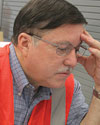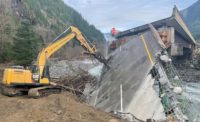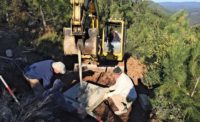A hurricane is rising in the farmland of northwestern South Carolina, and it is going to stay there for the foreseeable future, ripping off roofs, driving rain through walls, shattering windows and shredding buildings.
That’s the purpose of a $40-million building materials and assemblies test facility nearing completion in Chester County, S.C. It is designed to attack full- scale test structures with the swirling winds and rains of hurricanes, the pounding hail of severe thunderstorms, or the wind-driven embers of wildfires.
The owner is the Institute for Business and Home Safety (IBHS), a Tampa, Fla.-based insurance industry group whose member companies are sick of paying for losses to buildings that fail in heavy weather.
“This is such a critically important, game changing initiative,” says Julie Rochman, IBHS president and CEO. “There really—at least to me—was no other choice but to try and do it right, the best way it could be done.”
Rochman, who was at the Insurance Institute for Highway Safety prior to joining IBHS in late 2007, says she saw a huge advance in automobile safety arise from data collected at the highway group’s crash-test lab. As a result, she threw her energy into convincing the IBHS board to move ahead with its sputtering plans to build a similar facility to test the ability of construction materials and building techniques to survive strong storms.
“How can you not pursue something like our lab with vigor?” Rochman says. “There is no doubt that millions of people will benefit from what we are doing.”
The IBHS says its member companies make the country’s largest purchases of roofing materials for re-roofing storm-damaged homes. Reducing these payments is expected to cover the cost of the lab and its operations.
The plan makes perfect sense, but it doesn’t prepare a visitor, rounding a curve on a country road about 45 minutes south of Charlotte, N.C., for the view along the curious, curving, 20-ft-high sound-attenuation berm and the sight of the building with its massive bank of fans.
Boxed Storms
The main structure is a nearly 42,000-sq- ft wind instrument. It is tuned to channel the programmable blasts of 105 electric fans that are 300 hp, have 16 blades, and are 5½-ft in diameter. The fans blast wind through a stack of curving tunnels and into a chamber designed to accelerate a wall of wind to about 140 mph as it hits test subjects on a 55-ft-dia turntable in the 21,000-sq-ft test chamber. With some slight future additions to the tunnels and exit portal, top winds should hit 175 mph.

REINHOLD
If everything goes as planned, when all the fans crank up to 100% velocity for the first time on the week of July 4, the device will roar like an army of chain saws, suck 30 MW of electricity off the 100 kVh transmission line running past the rear of its 90-acre site and send the roiling winds of a Category 3 hurricane through the room.
Each fan can push 230,000 cu ft of air per minute. Together, they can push 24 million cu ft per minute, which is an airflow volume equivalent to 20 times the flow of water at Niagara Falls, says IBHS spokeswoman Allison Dean Love.
The roof and walls are more heavily braced against lift and internal wind pressures, at 35 psf, than external ones. The back wall, which has four massive doors that subtly shape the exit portal to maximize wind velocity, is hardened to withstand the impact of flying debris expected to sail into the open field beyond.
Two engineers will guide the research: Timothy A. Reinhold, senior vice president of research and chief engineer, and Anne D. Cope, director of research.
The facility is Reinhold’s dream. Formerly a civil engineering professor at South Carolina’s Clemson University, he has been researching storm damage to structures for decades. But in the wake of 1992’s Hurricane Andrew,...









Post a comment to this article
Report Abusive Comment